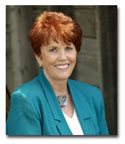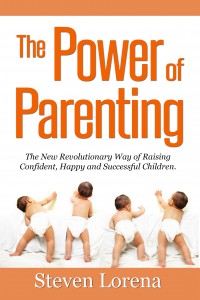By Lisa Lord, editor of The Attached Family.com.

After my oldest son turned one year old, the number of foods he would eat slowly began shrinking, and it continues it’s descent toward the single digits. Luckily he still eats a few real winners, like strawberries, broccoli, peanut butter and yogurt, but my concern is growing as once-loved foods are picked off the list one by one. My younger son is more adventurous: Pepperoni, black olives and turkey burgers were recently upgraded to “delicious,” and he’s willing to try anything his friends are eating. But even he is prone to turning up his nose at the dinner table.
I’ve always loved the idea of cooking with my kids, but the reality has often been more like a recipe for frustration rather than fun. I hear the same thing from a lot of parents. According to Sally Sampson, founder of the nonprofit ChopChopKids and author of the cookbook ChopChop: The Kids’ Guide to Cooking Real Food with Your Family, getting kids involved in the kitchen may be just the solution we are looking for, not only to broaden our kids’ palates but to nurture family connection as well.
LISA: Can you tell us about ChopChopKids and it’s mission?
SALLY: ChopChopKids is a nonprofit organization with a mission to inspire and teach kids to cook and eat real food with their families. We do that in print and digitally, and we are just starting cooking classes.
If you’re not cooking, you are probably eating a jot of junk. Whether you are obese or hungry, junk is not the solution. You need to be eating real food, and the way to eat real food is to cook it.
LISA: Why is it so important for parents to cook with their kids? What do parents and children stand to gain?
SALLY: First of all, kids who cook have wider palates. What we have found is that kids often don’t want to eat certain foods because of the surprise factor. But if they are part of the process, then when they sit down to eat the broccoli they just cooked they are not surprised by it and want to show off what they made. They want to try it, and they want other people to try it, much like when they draw a picture and want to put in on the refrigerator.
Additionally cooking helps with math skills because there is measuring, it helps with understanding other cultures because kids are cooking foods from all over, and it helps with science because, for example, you might be eating yogurt and then talking about fermentation. And it’s a great activity to do together; cooking helps bond kids with their families.
LISA: Mealtimes and food choices can become a source of power struggles between children and parents, especially when parents are worried about the amount or variety that their children eat. In your experience, what happens when parents invite their kids to join in the shopping and cooking?
SALLY: I recently did a series on The New York Times Motherlode blog about picky eating. Obviously it’s really hard to cook every meal with your kids, and it can be frustrating because it’s messy and time consuming. What happened with the twin boys [in the blog series] was that when they cooked it, they ate it. What they were resistant to was foods being unfamiliar. For example, they liked scrambled eggs, so their mother put out little bowls of things the kids could add in, like scallions, ham, kale and cheeses. One of her sons put in scallions, which he claimed to hate, but ate it all. So when he sat down at the table he wasn’t saying “Yuck, scallions” because he had made the choice to put them in himself. The difference was huge.
LISA: Cooking with young kids can be challenging. I can understand why a lot of parents shy away because, as you mentioned, it can be messy and time consuming, especially if the younger kids just want to play while cooking. It’s developmentally appropriate, but it can be frustrating, too. What words of encouragement do you have for parents?
SALLY: You can start small! If you have very young kids, just let them add cherry tomatoes to a salad, or if they are old enough to count, tell them to add 12 cherry tomatoes to the salad, and ask them to mix the salad. The boys in the blog project were 4 years old, so they didn’t do a lot of the cooking, but they did a lot of the prepping, and they added a lot at the table. When their mom made turkey burgers, she had bowls of things set out, and the boys helped assemble the burgers. You can put out chunks of veggies or fruit after school and have kids skewer them. Start with preparation before you start cooking if that’s a hard leap for you.
LISA: Many parents struggle with their children’s picky eating habits, which isn’t helped by the food culture in the United States (and in many other developed nations), in which processed and unhealthy foods are readily available everywhere and are heavily marketed to kids. What advice do you have for parents to help their children eat a wider variety of foods?
SALLY: What started the recent blog project was that the mom I was working with told me it drove her crazy that one son would only eat hot dogs. I looked at her and asked, “Does he do the grocery shopping?” That’s the number-one rule: Don’t buy it if you don’t want kids to eat it. When you’re home it’s easier than when you are out in the world. We have an obesogenic culture; everything is out there, and it’s very hard being the lone mom saying “no, no, no.” I was that lone mom saying no, and it was hard.
Try talking to your kids about why you don’t want them to eat junk. Don’t have food in the house that you don’t want kids to eat. And institute a “one-meal rule.” You make one dinner, and it’s up to kids to eat or not, and you don’t offer to make something else, so you’re not a short-order cook. When my kids were very young, if they didn’t like dinner the option was that they could get themselves yogurt, cottage cheese or cereal (and my cereals were all sugar free). They are now 19 and 21, and both say I didn’t make it appealing to be a picky eater. Since I was always making interesting stuff, there was no upside to battling.
Of course, if your child has food allergies or true sensitivities, that’s different: it’s a medical issue.
Once my kids started to drive and both had jobs, they ate more junk. I only had the kind of food in the house I felt was OK to feed them, but once they get to a certain age they were buying their own. When my son did the grocery shopping, at first he came home with junk. I told him that he could eat it, but I wouldn’t pay for it. And that’s still the case. You can’t control what a 19-year-old eats, but you can control what you pay for. I’m not insanely rigid–clearly we don’t eat just brown rice and tofu–but my house is pretty clean.
LISA: This ties in well with of one of API’s Eight Principles of Parenting: Feed with Love and Respect, because it’s a way to feed respectfully according to your values and kids’ best interest in the long term. Do you have any special tips about helping kids get comfortable with a variety of vegetables?
SALLY: The number one mistake people make is to assume that their kids aren’t going to like certain foods. I’m opposed to the “take-one-bite rule.” I think you say, “Wow this is fantastic!” and then the kids eat it or not. Some foods don’t taste good to some people, so I’m not saying everyone should like everything, but I think sending super positive messages and being a great role model can help. Serve lots of vegetables at the table, and do little experiments. For example, cut up four different vegetables and serve them with four dips. Make it more about the dip than the vegetables. You can get different kinds of hummus and white bean dip, and so on. You can usually get kids to try this, and it’s really fun. Or serve the salad first, and have kids arrive at the table hungry. I still experiment with this with my son. He loves salad, but if I put the chicken on the table first then he will go for that, whereas if I put the salad on the table first then he eats a ton of salad and then goes for the chicken.
LISA: Tell us about your cookbook ChopChop: The Kids’ Guide to Cooking Real Food with Your Family.
SALLY: The cookbook is an extension of ChopChop magazine and is a little more detailed. A lot of the recipes in the cookbook are basics that you can personalize. The magazine is written for kids; the cookbook is written for kids but also a little bit more for parents, a teeny bit more sophisticated.
LISA: Where can people find out more about ChopChop Kids, the magazine and the cookbook?
SALLY: People can visit our website www.chopchopmag.org.
Words of Encouragement
Still not sure about cooking with your young children? Catherine Newman, editor of ChopChop magazine, offers some tongue-in-cheek words of encouragement.
“Kids cooking. Even just reading those two words, you’re cringing, because you have toddlers still, or little kids, and it is impossible to let them ‘help’ without everything taking a million years, and you’ve got a lock-jawed smile stretching your face, sparrows nesting in the white beard that’s grown down to the ground in the time it took your child to measure 1/4 cup of flour. Plus, there’s the other 15 3/4 cups of flour spilled out of the bag onto the counter and floor, and the cat is trotting through it, and you will find his floury paw prints all over the house for the next 17 months. I hear you. But, and I always say this: it gets better. Invest now, deal with the mess and the endlessness with as much patience as you can muster, because one day . . . Oh, one day your kids will be cooking for you.”
(Reprinted with permission, www.benandbirdy.blogspot.com)
You might also enjoy the other articles in our National Nutrition Month series:
Feeding the Whole Family: An Interview with Cynthia Lair of Cookus Interruptus
Malnourished by a Western Diet, or NDD by Dr. William Sears
Strengthening Secure Attachment Through Food by Kelly Bartlett









